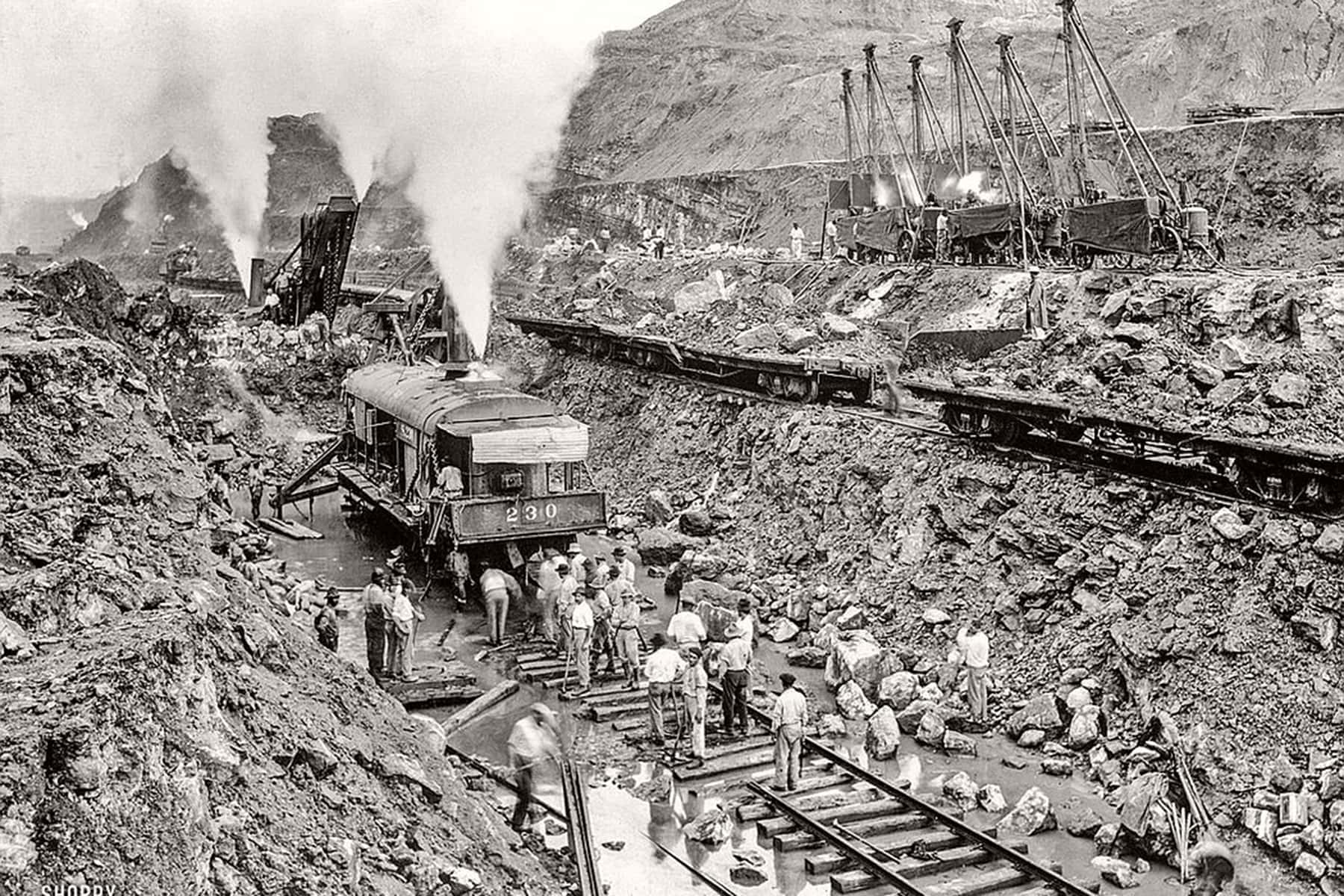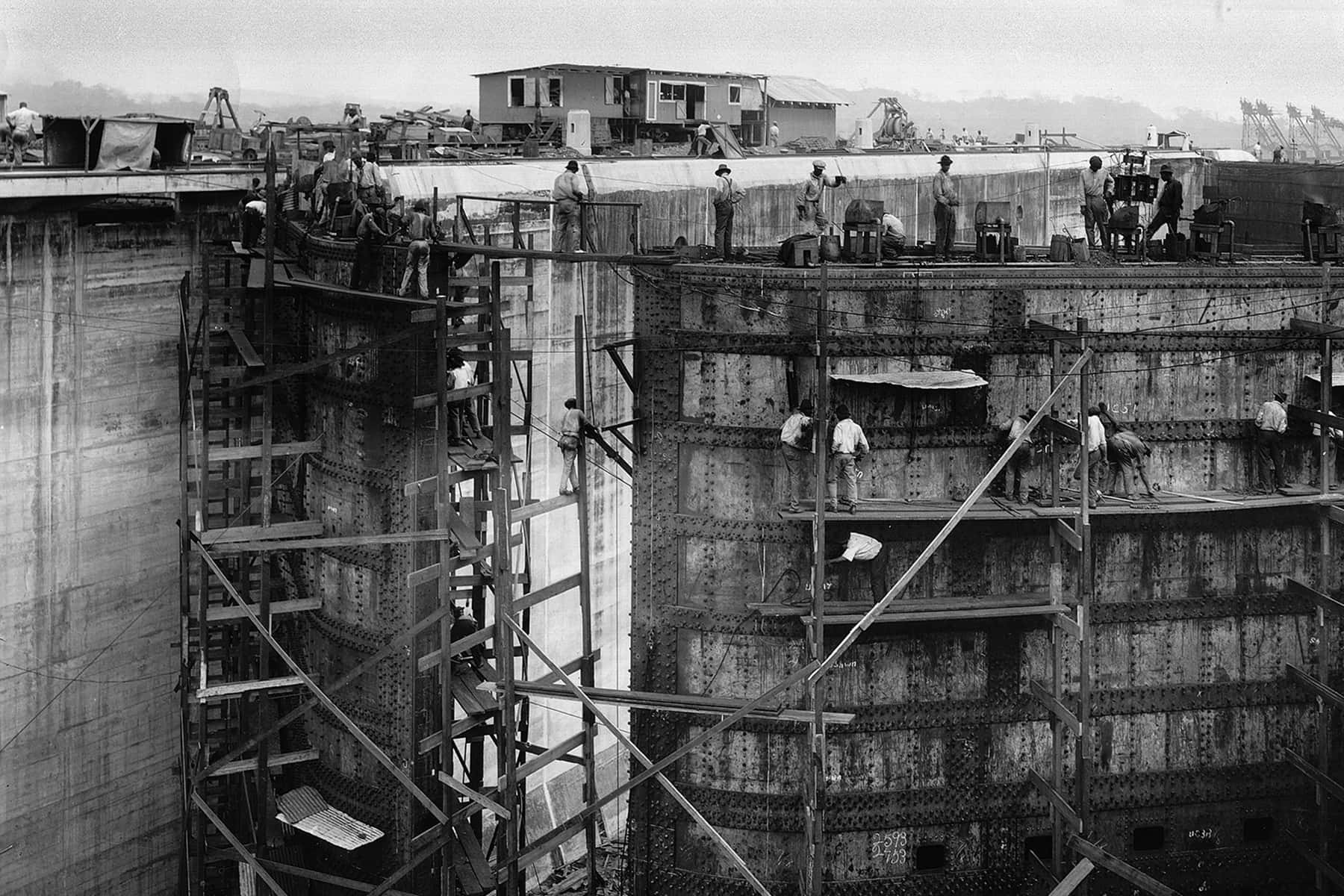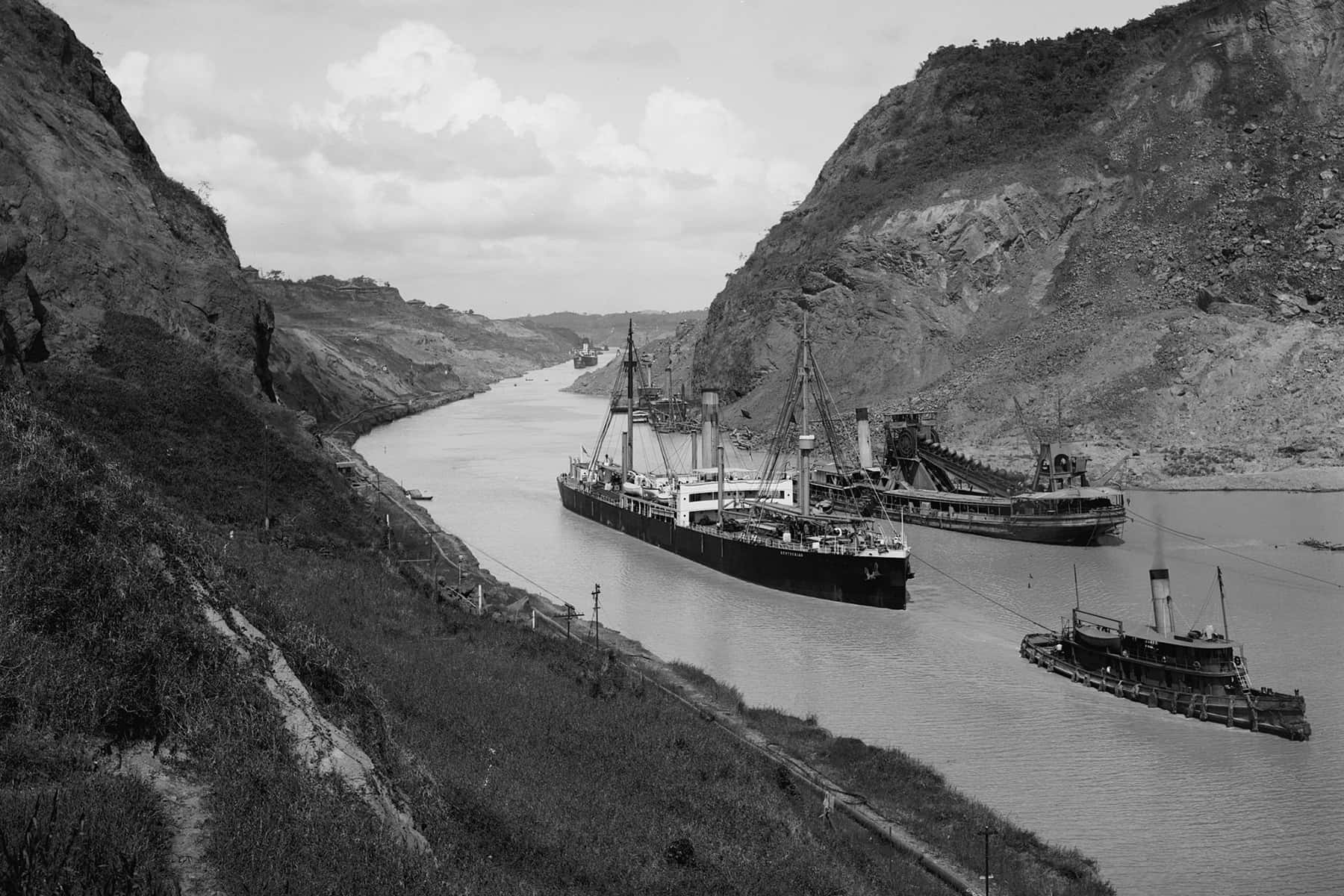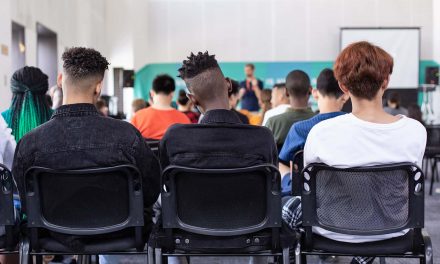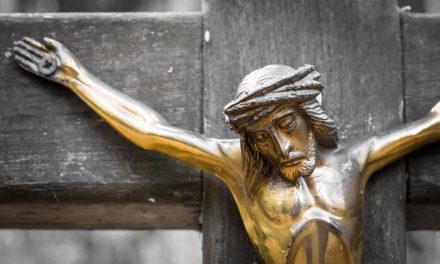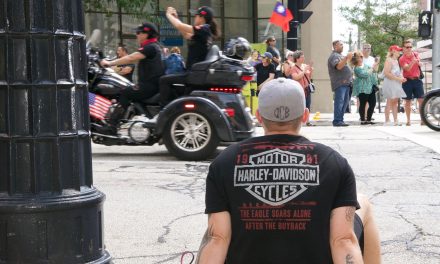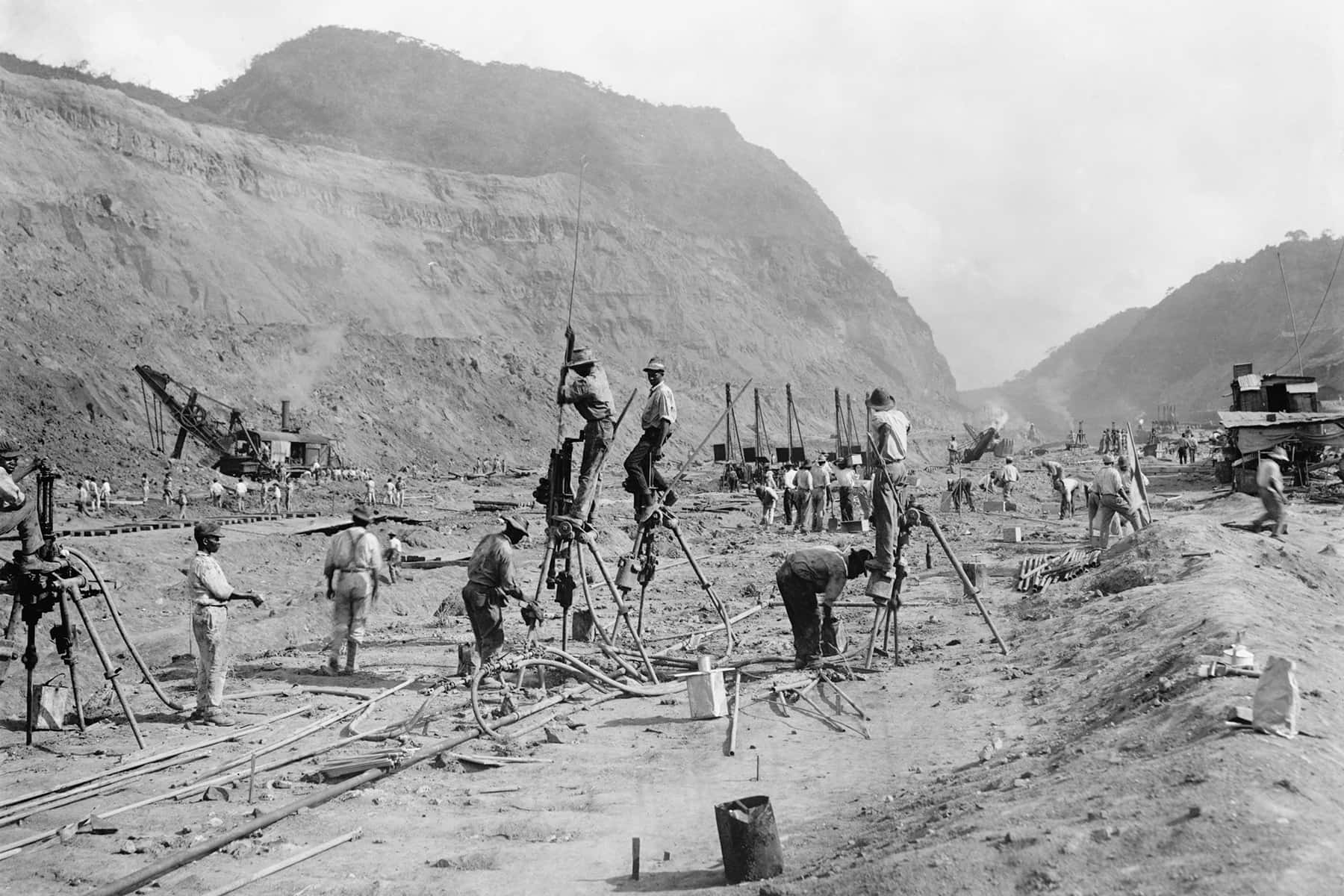
“A finer body of men has never been gathered by any nation than the men who have done the work of building the Panama Canal; the conditions under which they have lived and have done their work have been better than in any similar work ever undertaken in the tropics; they have all felt an eager pride in their work; and they have made not only America but the whole world their debtors by what they have accomplished.” – Theodore Roosevelt
The arrogance of progress is expressed clearly by President Theodore Roosevelt in this quote. After thousands of men, most from the Caribbean had died building the Panama Canal, he bragged about how safe the work environment was. Who cares that over 20,000 men died as the French tried building the canal before finally giving up in frustration? Why should the sacrifice of a few more thousand men deter progress?
Just as we are seeing people’s lives being taken unnecessarily to open the U.S. economy in the largest pandemic in modern times, malaria and yellow fever wiped out scores to build the Panama Canal. Lives were lost then for “progress” and lives are being lost now for “progress” in reopening the economy.
The fact that these lives today, just as they were then, were disproportionately non-white tells us the value “progress” places on lives of color. We call it progress but in reality there are always strings attached. Someone has to suffer disproportionately. The fact that people of color have been the victims of white people’s ideals of progress has been grossly underreported.
The business owners that are clamoring to reopen the economy while not doing nearly enough to protect its workforce do not reflect the demographics of that workforce. The owners of the large meatpacking plants, giant farms, the nursing homes, and the managers of the largest transit systems do not look like the workers who are getting sick and dying. The public face of the coronavirus and the private faces of these institutions do not match. Many of the ill workers are black and brown people from the U.S. and abroad, and poor immigrants recently from Eastern Europe and Southeast Asia.
While the owners and managers of professional sports teams fight to reopen their seasons, the National Football League (NFL) in their recent draft drafted mostly black football players from the college ranks. This added to a league that was already over 70 percent black. None of the owners are black. As we watched the first ever “virtual draft” the optics of who was picking and who was being picked could not have been more stunning. Yet they want to go full ahead with a season as if the pandemic is happening in another universe.
“I think, you know, right now our job is to be prepared for the season. That means keeping our football schedule as best we can — obviously with modifications to make sure we’re doing it safely. But we’re going to be prepared and ready, and we’re planning on playing this fall even though it may be different.” – NFL Commissioner Roger Goodell
The large influx of Latinos into Major League Baseball (MLB) over the past several decades has changed the complexion of that league but the majority owners in the league are all white. Nearly 30 percent of players in MLB were Latinos in 2017 even though they are just roughly 18 percent of the nation’s population.
The value of black and brown players minds has always been in question. This famous exchange took place on April 6, 1987 when ABC News’ Ted Koppel interviewed Los Angeles Dodgers executive Al Campanis on Nightline.
KOPPEL: I mean, there are a lot of black players, there are a lot of great black baseball men who would dearly love to be in managerial positions, and I guess what I’m really asking you is to, you know, peel it away a little bit. Just tell me, why you think it is. Is there still that much prejudice in baseball today?
CAMPANIS: No, I don’t believe it’s prejudice. I truly believe that they may not have some of the necessities to be, let’s say, a field manager, or perhaps a general manager.
KOPPEL: Do you really believe that?
CAMPANIS: Well, I don’t say that all of them, but they certainly are short. How many quarterbacks do you have? How many pitchers do you have that are black?
KOPPEL: Yeah, but I mean, I gotta tell you, that sounds like the same kind of garbage we were hearing 40 years ago about players, when they were saying, ”Aah, not really — not really cut out…” Remember the days, you know, hit a black football player in the knees, and you know, no…” That really sounds like garbage, if – if you’ll forgive me for saying so.”
CAMPANIS: No, it’s not – it’s not garbage, Mr. Koppel, because I played on a college team, and the center fielder was black, and the backfield at NYU, with a fullback who was black, never knew the difference, whether he was black or white, we were teammates. So, it just might just be – why are black men, or black people, not good swimmers? Because they don’t have the buoyancy.
KOPPEL: Oh, I don’t – I don’t – it may just be that they don’t have access to all the country clubs and the pools.
They broke for commercial but the interview was essentially over until Koppel tried to throw a lifeline to Campanis by saying “I’d like to give you another chance to dig yourself out, because I think you need it.” Campanis went on to say he thought many blacks in baseball were “highly intelligent, but they may not have the desire to be in the front office.” And he also added, “I know that they have wanted to manage and some of them have managed, but they’re outstanding athletes, very God-gifted, and they’re very wonderful people, and that’s all I can tell you about them.”
KOPPEL: Just as a matter of curiosity, Mr. Campanis, what is the percentage now of black ballplayers, for example, in your franchise?
CAMPANIS: I would say, I think Roger mentioned the fact that about a third of the players are black. That might be a pretty good number, and deservedly so, because they are outstanding athletes. They are gifted with great musculature and various other things, they’re fleet of foot, and this is why there are a lot of black major league ballplayers. Now, as far as having the background to become club presidents, or presidents of a bank, I don’t know. But I do know when I look at a black ballplayer, I am looking at him physically and whether he has the mental approach to play in the big leagues.
These remarks led to Campanis being fired a few days later. White people were shocked and outraged. Black people were just outraged. How could we be shocked that someone would say what we felt many white people believed about us to begin with? Our bodies are admired but our brains aren’t. Campanis kept going on about what great athletes we were. We’ve heard this racist refrain so often some of us actually believe it. We give no credit to the hard work and intelligence required to learn the game that allow these “athletes” to make it to the major leagues. A 2019 study tells us where we stand now in Major League baseball. There are only 68 African-American players among the total of 882 players on opening-day rosters, injured lists and restricted lists, according to research by USA TODAY Sports. So even our bodies are no longer valued by MLB.
When we look at the upper echelons of sports teams and other large businesses that make billions of dollars off of us, we recognize that our bodies are valued but not our brains. This is the case in professional and college sports in America where billionaires and millionaires use black bodies to entertain while telling us to mind our business and not talk about the ills of our community at large.
Two years ago, Fox News’ Laura Ingram remarked that she was not interested in the political advice from “someone who gets paid $100 million a year to bounce a ball. Keep the political comments to yourselves. Shut up and dribble.” She was speaking about arguably the most famous athlete in the world, Lebron James. He responded by saying, “The best thing she did was help me create more awareness.” The message from Ingram was clear; we value your body, not your brain.
Today is not so different than when the Panama Canal was being built. From 1881 until 1889 the French tried unsuccessfully to build a canal connecting the Atlantic and Pacific Oceans. Yellow Fever and malaria were their greatest nemesis. Ninety percent of the workers brought in by the French to build the canal were black men from the Caribbean. After 20,000 workers had died the French project ended.
Hank Bracker tells the story of what happened as Americans took over the project.
“The Panama Canal Zone was the only Latin American territory not acquired as a result of the war with Spain; however it was governed as if it had been. As president, Theodore Roosevelt understood the importance of a canal connecting the Atlantic to the Pacific Ocean. It would allow the United States to move its fleet from one coast to the other in a relatively short time, which had been a major problem during the war with Spain. To facilitate this he received authorization from Congress to purchase the assets of the failed French attempt to build a canal. The primary obstacle was in acquiring the necessary land to build a canal across the Isthmus of the Americas, which prior to 1903 was part of Colombia. When the United States showed an interest in building the canal, the Colombian government immediately demanded a larger percentage of the tolls than had been previously agreed upon with the French. Negotiations dragged on through 1902 and into 1903. Early in 1903, the United States signed a treaty with the Colombian government, giving the United States a strip of land 6 miles wide, from the Caribbean to the Pacific Ocean. On August 12, 1903, the irate Colombian Senate unanimously voted down the agreement and refused to give the United States the land. Panamanian insurgents with the backing of the United States perpetrated a revolt against the Colombian government, causing Colombia to lose the coveted parcel of land north of its present border. The fledgling nation of Panama was protected from Colombia by a dense jungle and the might of the United States. On November 3, 1903, after 57 years of policing Bogotá’s interests, the United States, looking out for its own best interests, sided with Panama against Colombia. A treaty was quickly drafted between the two new allies, giving Panama $10,000,000 of investment money, plus $250,000 per year in perpetuity. It also allowed the United States to purchase the remaining French assets that had been left behind. On November 18th, with the signing of the Hay-Bunau-Varilla Treaty, the Panama Canal Zone was formed.” ― Captain Hank Bracker, The Exciting Story of Cuba
After the Americans took over the project 40,000 workers were assigned to finish what the French could not. Once again most of the workers were brought in from places like Jamaica and Barbados. Officially 5,609 workers died but the numbers were significantly higher according to most historians of the period. That does not include the thousands that were permanently injured.
Just as we look back in time to learn lessons so that we don’t repeat past mistakes, the past can teach us what to expect in times of crisis. It has been over 100 years since those mostly non-white men gave their lives for “progress.” I believe we will count many of the COVID-19 deaths in a similar way someday.
We will recall the protests demanding reopening while the pandemic was still raging. We will look back on the number of deaths and lament the large racial and ethnic disparities. However, none of those lamentations will lead to forgiveness for the loss of lives. No one has yet apologized for this debacle we call a national response to the coronavirus. I doubt anyone ever will as long as the face of COVID-19 deaths continues to be a non-white face.
Back in March President Trump’s top economic adviser Larry Kudlow agreed that a pivot away from strict coronavirus measures could be on the horizon. Appearing on the Fox News show America’s Newsroom he responded to the president’s tweet about not letting the cure be worse than the problem.
“The president tweeted at midnight that we can’t let the cure be worse than the problem,” Fox News anchor Ed Henry declared. “He seemed to be talking about, in another week or so, making a decision to try to get the economy back open…How do you do that?” Kudlow responded that “we’ll have to try to do that” because the “economic cost to individuals is just too great,” adding that the administration will need to see how everything plays out after more Americans are tested for the virus. “But the president is right,” he exclaimed. “The cure can’t be worse than the disease, and we’re gonna have to make some difficult trade-offs.”
Trade-offs? We’re talking Trade-offs? Trade-offs?
In essence the trade-offs are lives. Some consider the economy more important than the lives of those who spend money and make the economy churn out the riches for the select few who benefit most from the U.S. economy. What they fail to see is that if people die they can’t spend money.
On April 13, 2020 the Wall Street Journal Editorial Board told us how the rich feel about reopening the economy.
“At long last our political leaders are considering how they can reopen the American economy they put into a destructive coma. Let’s hope this overdue process doesn’t devolve into another fight between governors and President Trump that will confuse Americans and slow the return to normal economic life.”
This rush to reopen will leave in its wake many untold numbers of Americans. Many of those untold numbers will be poor, non-white and not remembered by the masses. The history books will not tell us their names or many details about their lived experience during this pandemic. Instead we will be told the stories of the rich and powerful and their take on what happened.
Let me tell you what I wish I’d known
When I was young and dreamed of glory
You have no control
Who lives, who dies, who tells your story?
And when you’re gone, who remembers your name?
Who keeps your flame?
Who tells your story?
Who tells your story?
Who tells your story?
– Who Lives, Who Dies, Who Tells Your Story, by Original Broadway Cast of Hamilton
© Photo
Library of Congress

